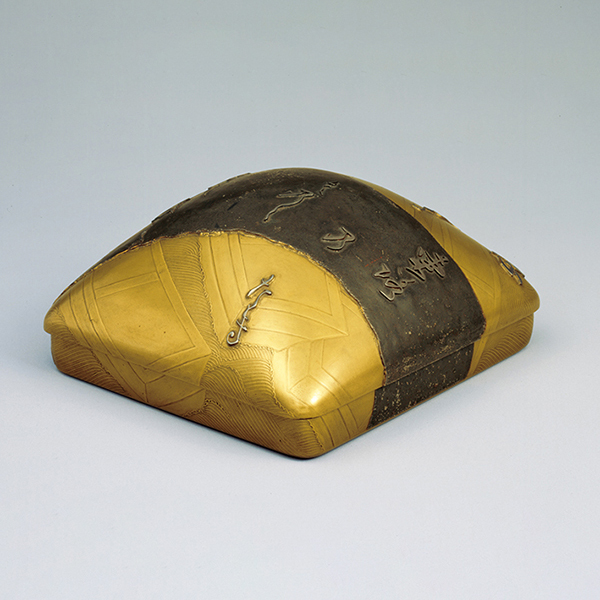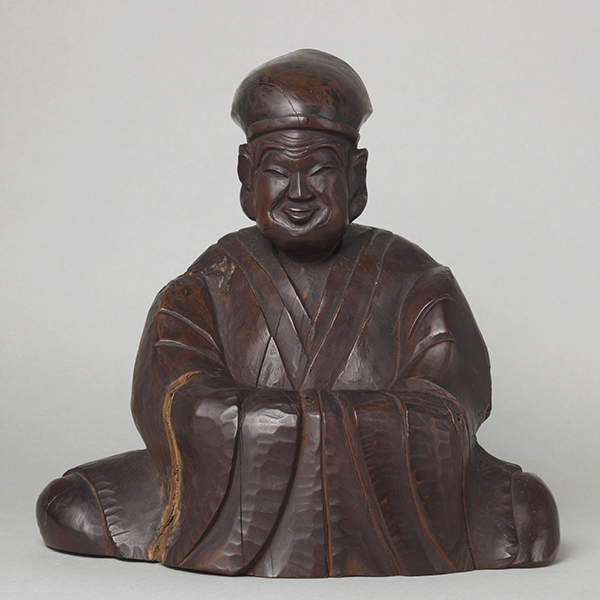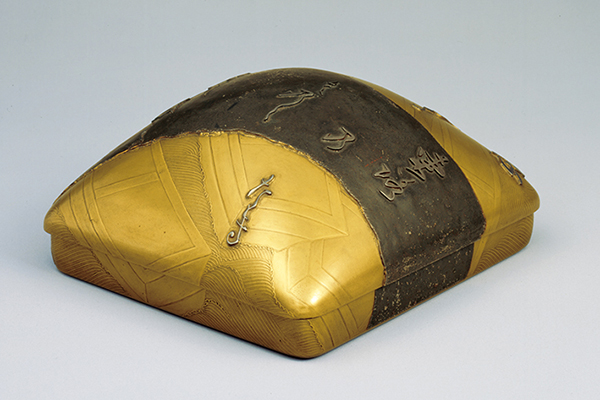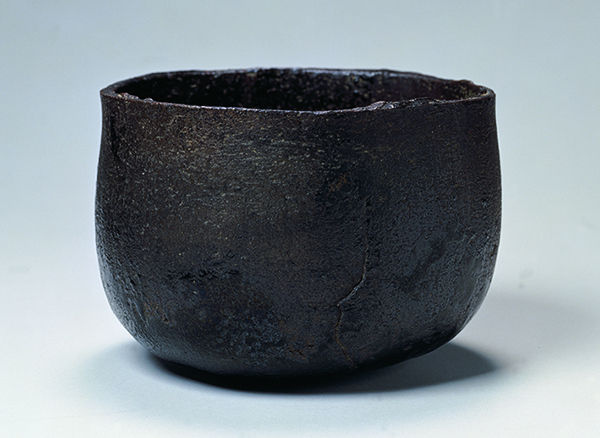Highlights of the Exhibition
Chapter One: The Hon’ami Family Trade and Their Faith in the Lotus Sutra The Sources of Kōetsu’s Art
Hon’ami Kōetsu (1558–1637) worked in diverse genres, including calligraphy, painting, and decorative arts. Today, works bearing the name Kōetsu hold a hallowed place in Japanese art history.
The Hon’ami family trade was sword polishing and appraisal, and they were a recognized authority in their field. Kōetsu’s aesthetic sensibilities in part derived from examining blades to determine their value. He used these sensibilities and the connections he made in his family’s line of work as the foundation for his artistic endeavors, which blossomed during the latter half of his life. The Hon’ami family were also devout believers in the Lotus sect (Hokkeshū) of Nichiren Buddhism, which reveres the teachings of the Lotus Sutra. Kōetsu was a passionate adherent to the faith and, through the sect’s strong network, collaborated with other craftspeople working in a range of mediums.
This section explores the sources of Kōetsu’s art through objects related to the Hon’ami family trade as well as their religious faith.
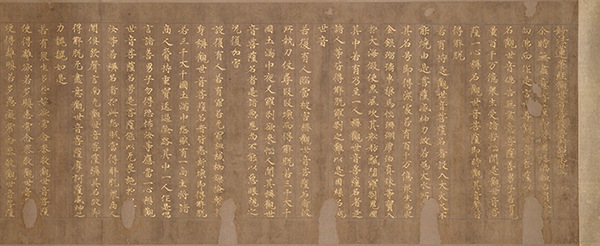 (detail)
(detail)The Threefold Lotus Sutra Heian period, 11th century, Honpōji Temple, Kyoto (Important Cultural Property)
Blade for a Dagger (Tantō), Inscribed “Hanagatami” (Flower Basket) By Kaneuji, Kamakura–Nanbokuchō period, 14th century (Important Art Object)
Guardless Dagger Mounting (Aikuchi Koshigatana) with Squirrel's Foot Ferns Edo period, 17th century
Chapter Two: Noh Chant Books and Kōetsu Maki-e Explosive Words and Forms
A bold new style of lacquerware suddenly emerged at the beginning of the Early Modern period (1573–1868). It featured large lead plates that intentionally disrupted delicate maki-e designs as well as the unconstrained use of mother-of-pearl. This new style possessed an unfettered charm and bore designs reminiscent of the famed painter Tawaraya Sōtatsu (dates unknown). It was later called Kōetsu Maki-e due to the presumed involvement in some form by Hon’ami Kōetsu. Around the same time, a wave of interest in chants performed in Noh theater swept through the merchant, warrior, and noble classes alike, even reaching Kōetsu himself. To aid them in their pursuits, libretto-like guides to Noh chanting (called utaibon) with ornate decorations and bindings were made. The designs on these objects feature words and images that allude to literary works, including poetry like waka and renga. To understand how the people of the day interpreted these motifs and to better illuminate Kōetsu Maki-e as a whole, this section traces how earlier designs evolved into unorthodox forms and taps into the rich world of literature to decipher their meaning.
Writing Box with a Pontoon Bridge By Hon’ami Kōetsu (1558-1637), Edo period, 17th century (Tokyo National Museum, National Treasure)
Chapter Three: Line and Form in Kōetsu’s Calligraphy A Master of Two-Dimensional Space
Some of Kōetsu’s best-known calligraphic works are scrolls of waka poetry brushed on paper decorated with innovative artwork. The calligraphy is particularly notable for its skillful modulations in line thickness and the use of “scattered” characters that play off the designs underneath. Yet, Kōetsu’s brushwork was not limited to grand, decorative styles. The artist’s sincere religious devotion is reflected in his sharp, conscientious lettering when creating copies of texts related to the Lotus sect. Further, his personal correspondence suggests his natural disposition in the unstinting richness of its lines. The wavering handwriting of his later years is likely evidence of a battle with palsy. Kōetsu’s lines and forms create a variety of impressions and offer a window into the expressive power of a master calligrapher throughout his lifetime.
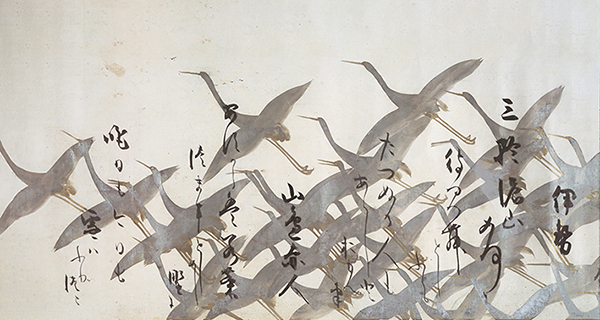 (detail)
(detail)Poems by the Thirty-Six Immortal Poets over Paintings of Cranes Calligraphy by Hon’ami Kōetsu, Paintings by Tawaraya Sōtatsu, Edo period, 17th century, Kyoto National Museum (Important Cultural Property)
Chapter Four: Kōetsu’s Tea Bowls Blades of Clay
Kōetsu is thought to have begun making pottery in earnest in 1615, when the shogun Tokugawa Ieyasu (1543–1616) granted him a plot of land called Takagamine on the outskirts of Kyoto. He came to focus in particular on molding tea bowls by hand as a result of his close relationship with the Raku lineage of potters, which had mainly produced tea bowls since it was founded by Chōjirō (d. 1589). Kōetsu’s works reveal a keen understanding of form that arose from his family background in sword polishing and appraisal. His tea bowls exhibit an extraordinary degree of individuality, with each having its own distinct shape and glaze finish. Yet, all are carved with meticulously calculated strokes and feature applications of glaze uniquely tailored to the texture of the clay.
Tea Bowl, Named “Shigure” (Early Winter Rain) By Hon’ami Kōetsu; Raku ware, black Raku type Edo period, 17th century, Nagoya City Museum, Aichi (Important Cultural Property)

